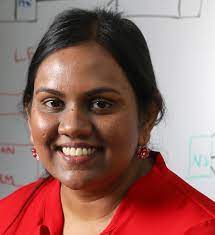Task Description
Food is a universal aspect of our lives. Answering questions about food that are semantically annotated can easily showcase advances in semantic web and information retrieval techniques. The challenge participants will be expected to answer three types of questions related to food using the challenge datasets. The question types include the following.
Factoid questions that can be easily answered by a direct lookup (e.g., "How much carbs are in a serving of breakfast burrito?").
Comparison questions that require evaluation of two food concept entities with respect to one or more of their attributes (e.g., "Does Peanut Oil have more monounsaturated fat compared to Sesame Oil?").
Constraint questions that will have one or more restrictions on the food type that should be returned (e.g., "Suggest a food item without peanuts?"). The constraints may include one or more of the following: (I) User attributes (e.g., "peanut allergy" that will require an advanced inferring to ascertain what specific foods to avoid); (II) Substitutions that require determining a comparable food item through explicit (e.g., owl:sameAs, rdfs:seeAlso relationships) or implicit semantic relationships (e.g., inferring similar foods based on the attributes of a recipe or its ingredients); (III) Other contexts (e.g., food pairing such as a wine to go with spicy food) ; (IV) User preference (e.g., like crispy food, can only afford foods under a certain cost); (V) External factors such as seasonal ingredient availability (e.g., foods abundant during the summer).
Some of these constraints can be thought of as hard constraints (e.g., "peanut allergy"), while others can be considered as soft constraints (e.g., user preference to "crispy texture" of a food.)
The questions presented to the challenge participants will be in natural language.
The questions may follow several pre-specified templatized patterns, especially for the factoid and comparison questions, should the challenge participants wish to utilize SPARQL queries to answer the questions. However, the conversion from natural language to the SPARQL query is optional. We will accept solutions that utilize natural language processing techniques that directly use the question, as long as the answers are obtained from the food knowledge graph provided.
All the entity and attribute names included in the question will be available in this graph, though many of the relationships may need to be inferred.
The complex constraint questions will require some context information and reasoning, and the constraints in such questions will be given as several long lists of non-conflicting constraints.




